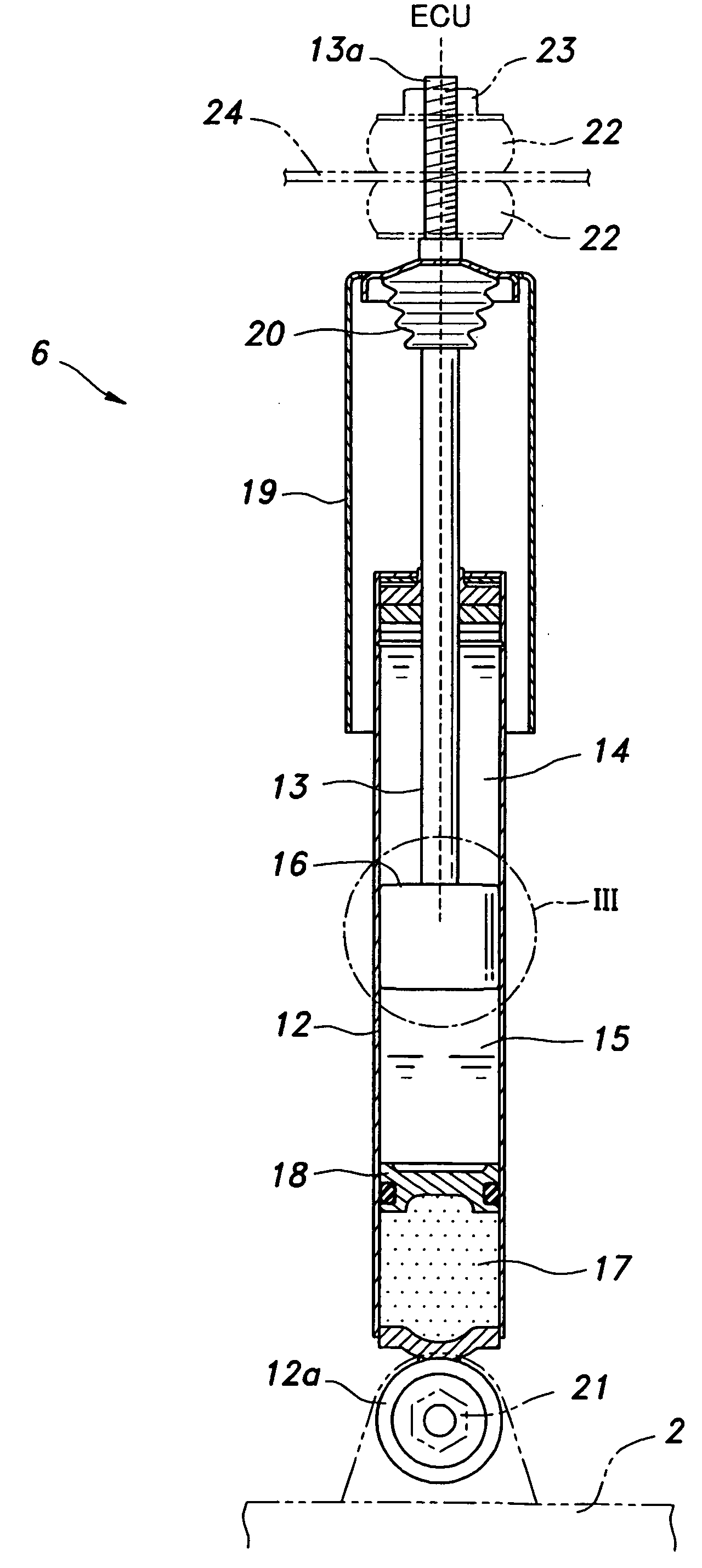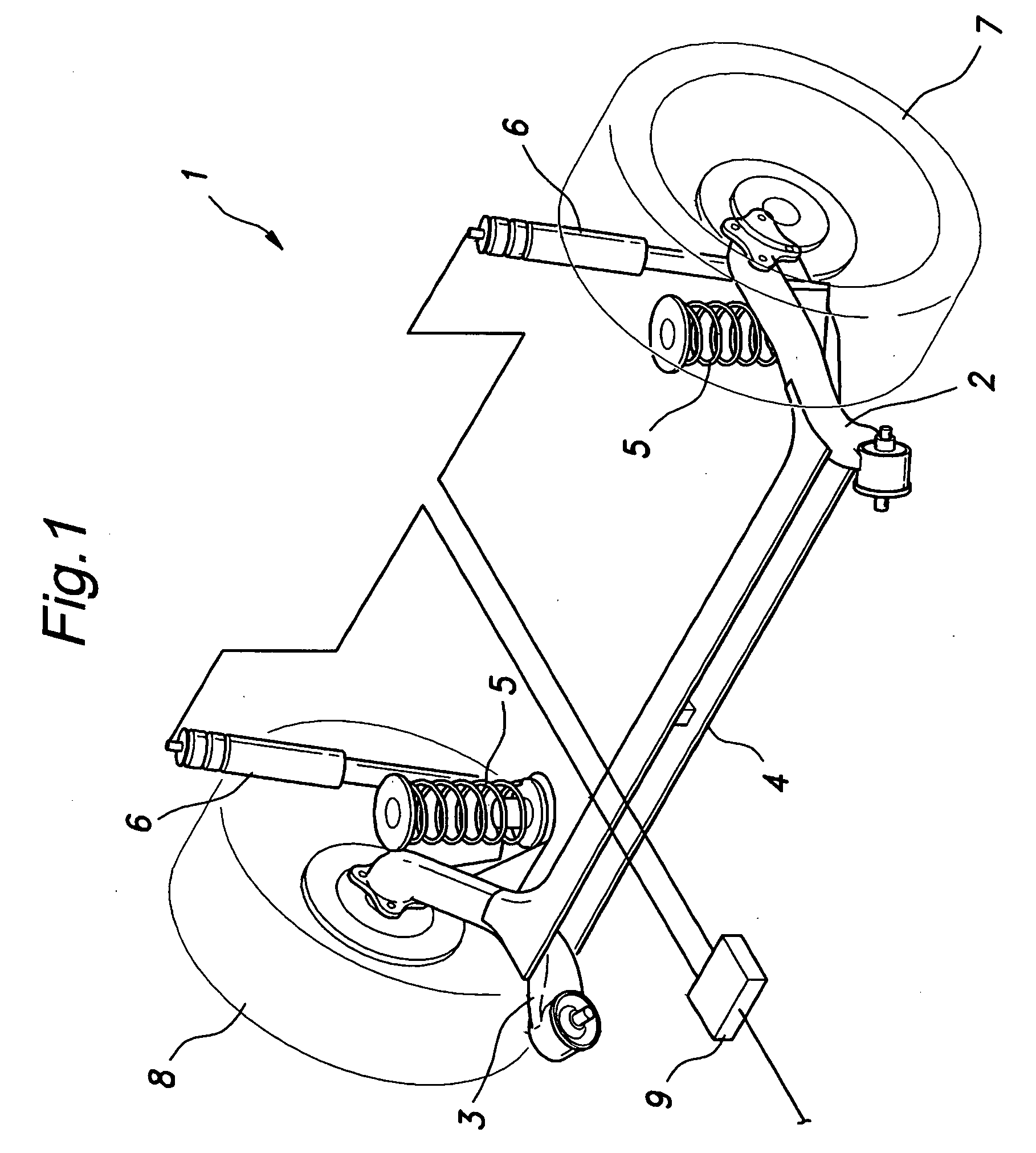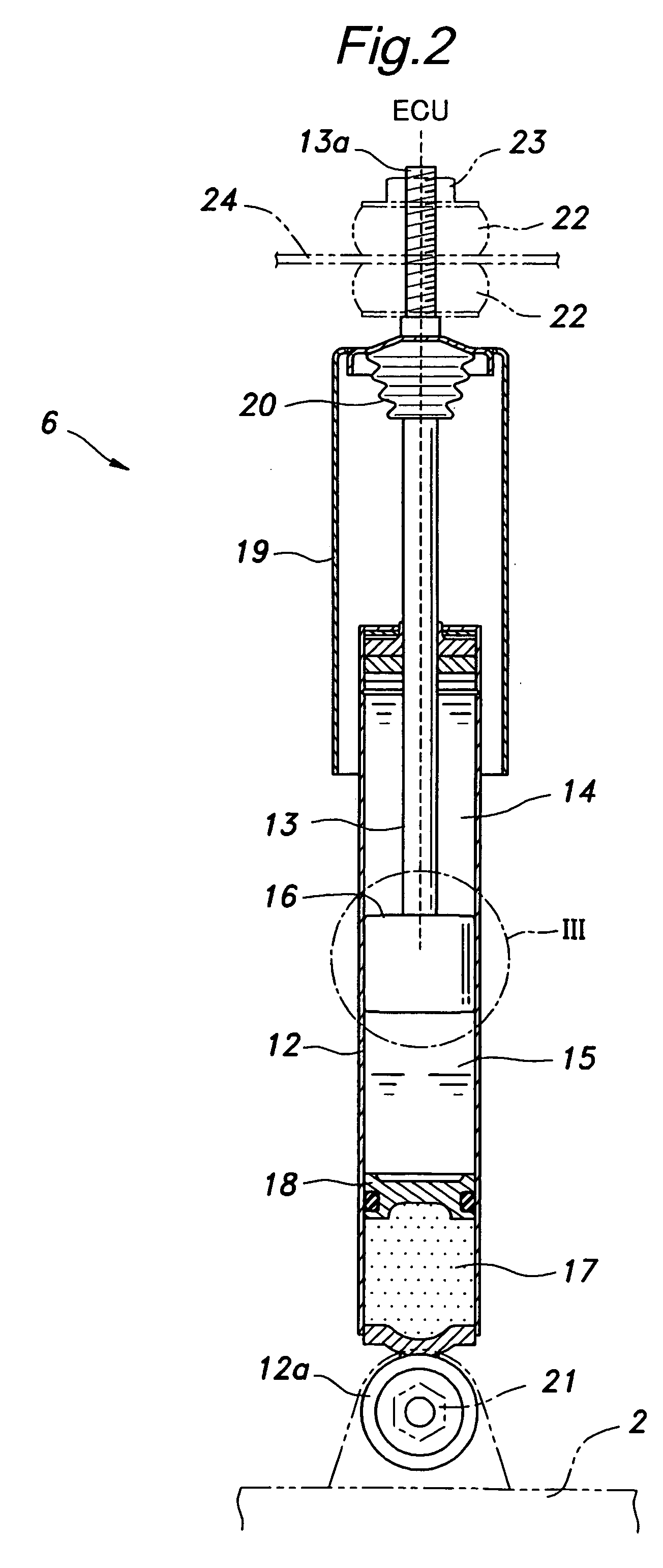Magneto-rheological damper
a damper and magnetic flux technology, applied in the direction of shock absorbers, springs/dampers, vibration suppression adjustments, etc., can solve the problems of low damping force range, low damping force density of materials, and inability to make the variable range of damping force so wide as desired, etc., to achieve good damping effect, improve damping durability, and high saturation magnetic flux density
- Summary
- Abstract
- Description
- Claims
- Application Information
AI Technical Summary
Benefits of technology
Problems solved by technology
Method used
Image
Examples
second embodiment
[0037]FIG. 6 shows the present invention. The parts corresponding to those of the previous embodiment are denoted with like numerals without repeating the description of such parts to avoid redundancy.
[0038]In the second embodiment, no piston cover is used. The end plates 33 and 34, inner yoke 32 and outer yoke 31 are held integrally together by a plurality of threaded bolts 40 passed axially through the end plates 33 and 34 and inner yoke 32. In this embodiment also, the outer yoke 31 is made of Permendur, and the outer circumferential thereof opposes the inner circumferential surface of the cylinder 12 with an annular gap defined therebetween owing to the end plates 33 and 34 that clamp the inner yoke 32 between them. The end plates 33 and 34 have a larger outer diameter than the outer yoke 31 so that the outer circumferential surfaces of the end plates 33 and 34 are in sliding engagement with the inner circumferential surface of the cylinder 12 while the outer circumferential sur...
third embodiment
[0039]FIG. 7 shows the present invention. The piston 16 comprises a substantially solid cylindrical inner yoke 126 made of magnetic material, and an end of the piston rod 13 is received in a hole 135 formed centrally in an axial end of the inner yoke 126. The inner yoke 126 consists of axially separated two parts 126a and 126b which are integrally and axially joined to each other by four threaded bolts 127 passed into the inner yoke 126 from the axial end remote from the piston rod 113.
[0040]The outer circumferential surface of the inner yoke 126 is formed with an annular groove 128 in an axially central part thereof, and a coil 130 is received therein via a coil bovine 129. In this case also, the coil 130 is wound in the circumferential direction, and molded in resin. The outer peripheral part of the annular groove 128 is provided with axial extensions 131 formed by extending parts of the inner yoke 126 from the both axial ends into the peripheral part of the coil 130. In the illus...
PUM
 Login to View More
Login to View More Abstract
Description
Claims
Application Information
 Login to View More
Login to View More - R&D
- Intellectual Property
- Life Sciences
- Materials
- Tech Scout
- Unparalleled Data Quality
- Higher Quality Content
- 60% Fewer Hallucinations
Browse by: Latest US Patents, China's latest patents, Technical Efficacy Thesaurus, Application Domain, Technology Topic, Popular Technical Reports.
© 2025 PatSnap. All rights reserved.Legal|Privacy policy|Modern Slavery Act Transparency Statement|Sitemap|About US| Contact US: help@patsnap.com



